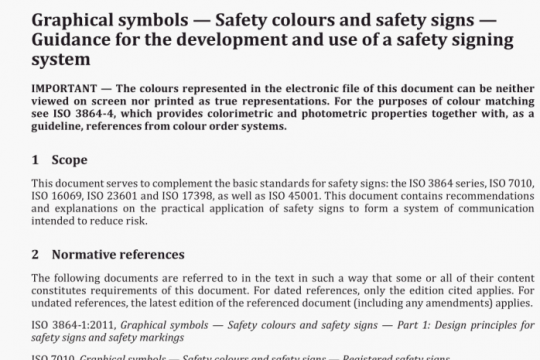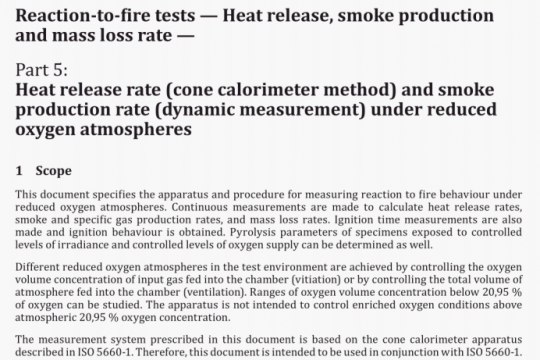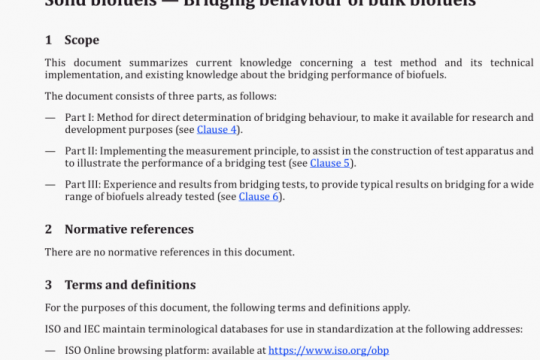ISO 27269 pdf free download
ISO 27269-2021 pdf free download.Health in formatics – International patient summary.
6.1 Patterns within the IPS Data Set
6.1.1 General
This document describes an abstract data model which is implementation independent.
The IPS Data Set is hierarchical and the nesting organizes the data elements. At the bottom of the hierarchical description in the IPS there are data elements that can be described in a generic fashion that are not use case dependent. Within the IPS Data Set it is easy to identify structures that have a similar pattern. These “patterns” may or may not correspond to dwell-known” data types (for example coded elements; date-times; person names; addresses). Examples of these primitive value types that reoccur in the IPS Data Set are:
— Identifiers
— Entity Names (people, organizations, products, etc.)
— Date/time elements (or interval of date/time)
— Address details
— Telecom details
Where applicable, the 150 21090 data types have been used as reference for describing their main characteristics. For example, when the name of a person is provided, that name should be provided as a list of parts such as given name or family name, prefix. suffix; when more than one part is given It should be allowed to distinguish among their usage (e.g. official name; maiden name); more representations should be recorded when the name is not alphabetic; and so on. All these properties are summarized indicating that the Person Name is related to the ISO EN.PN datatype without repeating all of these characteristics.
When an ISO 21090 data type is referred to, it is not assumed that implementations will have direct conformance (see ISO 21090:2011, 5.2) with them. However, derived models, including implementable specifications, should declare how the used patterns will be realized when not self-evident by the used standards (i.e. indirect conformance, see ISO 2 1090:2011, 5.3).
In order to better show how the patterns defined by this document may be realized by derived models (in this case by an implementable specification), a reference to the HL7 FHIR® datatypes has been also included. The reason of this choice is due to the presence — at the best of our knowledge — of only two standardization activities related to this IPS standard: one based on the CDA R2 standard and one on HL7 FHIR®. Since the CDA R2 standard uses a modified form of a previous version of the ISO data types it has not been considered useful to add this as reference. The mapping between the ISO datatypes and the HL7® V3 R1.1 is in fact straightforward: e.g. IVL(PQ) is IVL_PQ; ED is ED; and so on. Other reference implementations may he added in the future if new IPS standardization activities using different data types will be realized.
6.1.2 Label Concept
The term ‘Label Concept’ is used to describe data model elements that play the role of container and usually have complex structures, for instance they may contain clinical statements or details of participants. Label Concepts also facilitate recursive definitions. For example, the result of an assessment can he an assessment.
6.1.3 List
List structures are commonplace in clinical records. Virtually all of the IPS Sections comprise lists as part or perhaps all of their main content. It is therefore possible to represent parts of this specification with formal list structures to support business rules that assist with precision, conciseness and readability. However, the representation chosen to represent the lists in this document does not necessitate a particular implementation (e.g. it is not required that an IPS list element is realized by using a ‘list’ resource if HL7 FHIR® is used).
A list may be an empty list, a container awaiting content. The items in the list are of the same type and so their structure/content can be defined as a single template, rather than creating a separate template for each individual item to be placed in the list. For example, a list of Lifestyle factors, would have the same item structure (described generically once) for a factor, but the list would grow as new lifestyle data was required to be added, e.g. a smoking factor, an alcohol factor, drug dependency etc.
In the Patient Summary and similar clinical communication, it is necessary to determine why certain data are missing, and whether or not its absence is permissible. For example, the IPS Section PROBLEMS is mandatory in the IPS Document, and it comprises a list of problems; it maybe that the patient has never had any type of problem before this particular event and the problem list will be empty. In this example it would be necessary to explicitly state that there are NO problems in the patient’s history. Often a predicate is evaluated, and the following material becomes conditional on the result.
6.1.4 Reference
A “reference pattern is a means to provide a directional link from a source element to a target. References can be internal, i.e. they refer to information included in the patient summary; or external, i.e. they refer to objects found elsewhere.
Depending on the technology used and on the type of object referenced, different types of information may be requested, e.g. just an URL (literal reference); just an identifier (logical reference); a set of identifiers; a set of identifiers plus other information needed to access the object; and so on. An example is in the Advance Directive Section which may need a link to an external legal document.
6.1.5 Person Name
A name for a person constituted by a sequence of name parts, such as given name or family name, prefix, suffix. There is a need to be able to provide single-string and component-based representations of Person Name’ in different scenarios reflecting jurisdiction and cultural practices.
Preferred use within borders in addition to permitting cross-border settings should be facilitated
References: ISO 21090:2011 EN.PN, ENXP datatypes for Person Name properties and parts; HL7 FHIR® Human Name.
Business Rules:
1. If not otherwise specified, it is allowed to provide more ‘Person Name’ elements for the same person.
2. Person Name SHOULD include the given and family components and at least one of the two SHALL be present.
3. In case of non-alphabetic representations of the names, at least one alphabetic representation SHALL be provided.
Variants such as ‘preferred name’ or ‘alias’ are implicit in the Person Name data type. For example, when the name of a person is provided, that name should be provided as a list of components such as given name or family name, prefix, suffix; when more than one component is given it should be allowed to distinguish among their usage (e.g. official name; maiden name); more representations should be recorded when the name is not alphabetic; and so on. All these properties are summarized indicating that the Person Name is related to the ISO EN.PN datatype without repeating all of these characteristics.”ISO 27269 pdf download.




